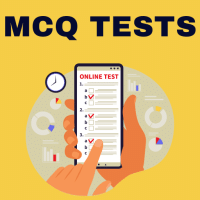Humanities/Arts Exam > Humanities/Arts Questions > Read the case study given below and answer t...
Start Learning for Free
Read the case study given below and answer the questions that follow:
Rural marketing centres cater to nearby settlements. These are quasi-urban centres. They serve as trading centres of the most rudimentary type. Here personal and professional services are not well-developed. These form local collecting and distributing centres. Most of these have mandis (wholesale markets) and also retail areas. They are not urban centres per se but are significant centres for making available goods and services which are most frequently demanded by rural folk. Periodic markets in rural areas are found where there are no regular markets and local periodic markets are organised at different temporal intervals. These may be weekly, bi-weekly markets from where people from the surrounding areas meet their temporally accumulated demand. These markets are held on specified dates and move
from one place to another. The shopkeepers thus, remain busy on all the days while a large area is served by them.
Q. Choose one feature of a rural marketing centre.
- a)Organised
- b)High pricing
- c)Vast and scattered
- d)None of the Above
Correct answer is option 'C'. Can you explain this answer?
Most Upvoted Answer
Read the case study given below and answer the questions that follow:...
The rural market in India is vast and scattered, and offers a plethora of opportunities in comparison to the urban sector. It covers the maximum population and regions, and thereby, the maximum number of consumers. Rural market is account for about 74% of total Indian population.
Free Test
| FREE | Start Free Test |
Community Answer
Read the case study given below and answer the questions that follow:...
Feature of Rural Marketing Centres
Rural marketing centres are unique in their structure and function, catering specifically to the needs of nearby settlements. Among the various features that characterize these centres, the aspect of being "vast and scattered" stands out.
Vast and Scattered
- Geographical Spread: Rural marketing centres serve a wide geographical area, encompassing multiple villages and settlements. This vastness allows them to cater to a larger population.
- Diverse Demand: The scattered nature of the population leads to varied demands for goods and services. Rural marketing centres must stock a diverse range of products to meet the specific needs of different communities.
- Periodic Markets: The existence of periodic markets, which move from one location to another, exemplifies the scattered nature of rural marketing. These markets are organized at specific intervals, ensuring that even remote areas have access to essential goods.
- Accessibility: The vast spread of these centres ensures that rural residents have more accessible points for trade, reducing the distance they need to travel to procure goods and services.
Other Features Considered
- Organized: While rural marketing centres do have some level of organization, they often operate in a less formal manner compared to urban markets.
- High Pricing: Generally, rural markets tend to maintain lower pricing due to less overhead costs and competition among local vendors.
- None of the Above: This option does not apply as the feature of being "vast and scattered" is clearly relevant.
In conclusion, the characteristic of being "vast and scattered" effectively captures the essence of rural marketing centres, highlighting their role in connecting diverse rural populations with essential goods and services.
Rural marketing centres are unique in their structure and function, catering specifically to the needs of nearby settlements. Among the various features that characterize these centres, the aspect of being "vast and scattered" stands out.
Vast and Scattered
- Geographical Spread: Rural marketing centres serve a wide geographical area, encompassing multiple villages and settlements. This vastness allows them to cater to a larger population.
- Diverse Demand: The scattered nature of the population leads to varied demands for goods and services. Rural marketing centres must stock a diverse range of products to meet the specific needs of different communities.
- Periodic Markets: The existence of periodic markets, which move from one location to another, exemplifies the scattered nature of rural marketing. These markets are organized at specific intervals, ensuring that even remote areas have access to essential goods.
- Accessibility: The vast spread of these centres ensures that rural residents have more accessible points for trade, reducing the distance they need to travel to procure goods and services.
Other Features Considered
- Organized: While rural marketing centres do have some level of organization, they often operate in a less formal manner compared to urban markets.
- High Pricing: Generally, rural markets tend to maintain lower pricing due to less overhead costs and competition among local vendors.
- None of the Above: This option does not apply as the feature of being "vast and scattered" is clearly relevant.
In conclusion, the characteristic of being "vast and scattered" effectively captures the essence of rural marketing centres, highlighting their role in connecting diverse rural populations with essential goods and services.

|
Explore Courses for Humanities/Arts exam
|

|
Question Description
Read the case study given below and answer the questions that follow:Rural marketing centres cater to nearby settlements. These are quasi-urban centres. They serve as trading centres of the most rudimentary type. Here personal and professional services are not well-developed. These form local collecting and distributing centres. Most of these have mandis (wholesale markets) and also retail areas. They are not urban centres per se but are significant centres for making available goods and services which are most frequently demanded by rural folk. Periodic markets in rural areas are found where there are no regular markets and local periodic markets are organised at different temporal intervals. These may be weekly, bi-weekly markets from where people from the surrounding areas meet their temporally accumulated demand. These markets are held on specified dates and movefrom one place to another. The shopkeepers thus, remain busy on all the days while a large area is served by them.Q. Choose one feature of a rural marketing centre.a)Organisedb)High pricingc)Vast and scatteredd)None of the AboveCorrect answer is option 'C'. Can you explain this answer? for Humanities/Arts 2025 is part of Humanities/Arts preparation. The Question and answers have been prepared according to the Humanities/Arts exam syllabus. Information about Read the case study given below and answer the questions that follow:Rural marketing centres cater to nearby settlements. These are quasi-urban centres. They serve as trading centres of the most rudimentary type. Here personal and professional services are not well-developed. These form local collecting and distributing centres. Most of these have mandis (wholesale markets) and also retail areas. They are not urban centres per se but are significant centres for making available goods and services which are most frequently demanded by rural folk. Periodic markets in rural areas are found where there are no regular markets and local periodic markets are organised at different temporal intervals. These may be weekly, bi-weekly markets from where people from the surrounding areas meet their temporally accumulated demand. These markets are held on specified dates and movefrom one place to another. The shopkeepers thus, remain busy on all the days while a large area is served by them.Q. Choose one feature of a rural marketing centre.a)Organisedb)High pricingc)Vast and scatteredd)None of the AboveCorrect answer is option 'C'. Can you explain this answer? covers all topics & solutions for Humanities/Arts 2025 Exam. Find important definitions, questions, meanings, examples, exercises and tests below for Read the case study given below and answer the questions that follow:Rural marketing centres cater to nearby settlements. These are quasi-urban centres. They serve as trading centres of the most rudimentary type. Here personal and professional services are not well-developed. These form local collecting and distributing centres. Most of these have mandis (wholesale markets) and also retail areas. They are not urban centres per se but are significant centres for making available goods and services which are most frequently demanded by rural folk. Periodic markets in rural areas are found where there are no regular markets and local periodic markets are organised at different temporal intervals. These may be weekly, bi-weekly markets from where people from the surrounding areas meet their temporally accumulated demand. These markets are held on specified dates and movefrom one place to another. The shopkeepers thus, remain busy on all the days while a large area is served by them.Q. Choose one feature of a rural marketing centre.a)Organisedb)High pricingc)Vast and scatteredd)None of the AboveCorrect answer is option 'C'. Can you explain this answer?.
Read the case study given below and answer the questions that follow:Rural marketing centres cater to nearby settlements. These are quasi-urban centres. They serve as trading centres of the most rudimentary type. Here personal and professional services are not well-developed. These form local collecting and distributing centres. Most of these have mandis (wholesale markets) and also retail areas. They are not urban centres per se but are significant centres for making available goods and services which are most frequently demanded by rural folk. Periodic markets in rural areas are found where there are no regular markets and local periodic markets are organised at different temporal intervals. These may be weekly, bi-weekly markets from where people from the surrounding areas meet their temporally accumulated demand. These markets are held on specified dates and movefrom one place to another. The shopkeepers thus, remain busy on all the days while a large area is served by them.Q. Choose one feature of a rural marketing centre.a)Organisedb)High pricingc)Vast and scatteredd)None of the AboveCorrect answer is option 'C'. Can you explain this answer? for Humanities/Arts 2025 is part of Humanities/Arts preparation. The Question and answers have been prepared according to the Humanities/Arts exam syllabus. Information about Read the case study given below and answer the questions that follow:Rural marketing centres cater to nearby settlements. These are quasi-urban centres. They serve as trading centres of the most rudimentary type. Here personal and professional services are not well-developed. These form local collecting and distributing centres. Most of these have mandis (wholesale markets) and also retail areas. They are not urban centres per se but are significant centres for making available goods and services which are most frequently demanded by rural folk. Periodic markets in rural areas are found where there are no regular markets and local periodic markets are organised at different temporal intervals. These may be weekly, bi-weekly markets from where people from the surrounding areas meet their temporally accumulated demand. These markets are held on specified dates and movefrom one place to another. The shopkeepers thus, remain busy on all the days while a large area is served by them.Q. Choose one feature of a rural marketing centre.a)Organisedb)High pricingc)Vast and scatteredd)None of the AboveCorrect answer is option 'C'. Can you explain this answer? covers all topics & solutions for Humanities/Arts 2025 Exam. Find important definitions, questions, meanings, examples, exercises and tests below for Read the case study given below and answer the questions that follow:Rural marketing centres cater to nearby settlements. These are quasi-urban centres. They serve as trading centres of the most rudimentary type. Here personal and professional services are not well-developed. These form local collecting and distributing centres. Most of these have mandis (wholesale markets) and also retail areas. They are not urban centres per se but are significant centres for making available goods and services which are most frequently demanded by rural folk. Periodic markets in rural areas are found where there are no regular markets and local periodic markets are organised at different temporal intervals. These may be weekly, bi-weekly markets from where people from the surrounding areas meet their temporally accumulated demand. These markets are held on specified dates and movefrom one place to another. The shopkeepers thus, remain busy on all the days while a large area is served by them.Q. Choose one feature of a rural marketing centre.a)Organisedb)High pricingc)Vast and scatteredd)None of the AboveCorrect answer is option 'C'. Can you explain this answer?.
Solutions for Read the case study given below and answer the questions that follow:Rural marketing centres cater to nearby settlements. These are quasi-urban centres. They serve as trading centres of the most rudimentary type. Here personal and professional services are not well-developed. These form local collecting and distributing centres. Most of these have mandis (wholesale markets) and also retail areas. They are not urban centres per se but are significant centres for making available goods and services which are most frequently demanded by rural folk. Periodic markets in rural areas are found where there are no regular markets and local periodic markets are organised at different temporal intervals. These may be weekly, bi-weekly markets from where people from the surrounding areas meet their temporally accumulated demand. These markets are held on specified dates and movefrom one place to another. The shopkeepers thus, remain busy on all the days while a large area is served by them.Q. Choose one feature of a rural marketing centre.a)Organisedb)High pricingc)Vast and scatteredd)None of the AboveCorrect answer is option 'C'. Can you explain this answer? in English & in Hindi are available as part of our courses for Humanities/Arts.
Download more important topics, notes, lectures and mock test series for Humanities/Arts Exam by signing up for free.
Here you can find the meaning of Read the case study given below and answer the questions that follow:Rural marketing centres cater to nearby settlements. These are quasi-urban centres. They serve as trading centres of the most rudimentary type. Here personal and professional services are not well-developed. These form local collecting and distributing centres. Most of these have mandis (wholesale markets) and also retail areas. They are not urban centres per se but are significant centres for making available goods and services which are most frequently demanded by rural folk. Periodic markets in rural areas are found where there are no regular markets and local periodic markets are organised at different temporal intervals. These may be weekly, bi-weekly markets from where people from the surrounding areas meet their temporally accumulated demand. These markets are held on specified dates and movefrom one place to another. The shopkeepers thus, remain busy on all the days while a large area is served by them.Q. Choose one feature of a rural marketing centre.a)Organisedb)High pricingc)Vast and scatteredd)None of the AboveCorrect answer is option 'C'. Can you explain this answer? defined & explained in the simplest way possible. Besides giving the explanation of
Read the case study given below and answer the questions that follow:Rural marketing centres cater to nearby settlements. These are quasi-urban centres. They serve as trading centres of the most rudimentary type. Here personal and professional services are not well-developed. These form local collecting and distributing centres. Most of these have mandis (wholesale markets) and also retail areas. They are not urban centres per se but are significant centres for making available goods and services which are most frequently demanded by rural folk. Periodic markets in rural areas are found where there are no regular markets and local periodic markets are organised at different temporal intervals. These may be weekly, bi-weekly markets from where people from the surrounding areas meet their temporally accumulated demand. These markets are held on specified dates and movefrom one place to another. The shopkeepers thus, remain busy on all the days while a large area is served by them.Q. Choose one feature of a rural marketing centre.a)Organisedb)High pricingc)Vast and scatteredd)None of the AboveCorrect answer is option 'C'. Can you explain this answer?, a detailed solution for Read the case study given below and answer the questions that follow:Rural marketing centres cater to nearby settlements. These are quasi-urban centres. They serve as trading centres of the most rudimentary type. Here personal and professional services are not well-developed. These form local collecting and distributing centres. Most of these have mandis (wholesale markets) and also retail areas. They are not urban centres per se but are significant centres for making available goods and services which are most frequently demanded by rural folk. Periodic markets in rural areas are found where there are no regular markets and local periodic markets are organised at different temporal intervals. These may be weekly, bi-weekly markets from where people from the surrounding areas meet their temporally accumulated demand. These markets are held on specified dates and movefrom one place to another. The shopkeepers thus, remain busy on all the days while a large area is served by them.Q. Choose one feature of a rural marketing centre.a)Organisedb)High pricingc)Vast and scatteredd)None of the AboveCorrect answer is option 'C'. Can you explain this answer? has been provided alongside types of Read the case study given below and answer the questions that follow:Rural marketing centres cater to nearby settlements. These are quasi-urban centres. They serve as trading centres of the most rudimentary type. Here personal and professional services are not well-developed. These form local collecting and distributing centres. Most of these have mandis (wholesale markets) and also retail areas. They are not urban centres per se but are significant centres for making available goods and services which are most frequently demanded by rural folk. Periodic markets in rural areas are found where there are no regular markets and local periodic markets are organised at different temporal intervals. These may be weekly, bi-weekly markets from where people from the surrounding areas meet their temporally accumulated demand. These markets are held on specified dates and movefrom one place to another. The shopkeepers thus, remain busy on all the days while a large area is served by them.Q. Choose one feature of a rural marketing centre.a)Organisedb)High pricingc)Vast and scatteredd)None of the AboveCorrect answer is option 'C'. Can you explain this answer? theory, EduRev gives you an
ample number of questions to practice Read the case study given below and answer the questions that follow:Rural marketing centres cater to nearby settlements. These are quasi-urban centres. They serve as trading centres of the most rudimentary type. Here personal and professional services are not well-developed. These form local collecting and distributing centres. Most of these have mandis (wholesale markets) and also retail areas. They are not urban centres per se but are significant centres for making available goods and services which are most frequently demanded by rural folk. Periodic markets in rural areas are found where there are no regular markets and local periodic markets are organised at different temporal intervals. These may be weekly, bi-weekly markets from where people from the surrounding areas meet their temporally accumulated demand. These markets are held on specified dates and movefrom one place to another. The shopkeepers thus, remain busy on all the days while a large area is served by them.Q. Choose one feature of a rural marketing centre.a)Organisedb)High pricingc)Vast and scatteredd)None of the AboveCorrect answer is option 'C'. Can you explain this answer? tests, examples and also practice Humanities/Arts tests.

|
Explore Courses for Humanities/Arts exam
|

|
Signup for Free!
Signup to see your scores go up within 7 days! Learn & Practice with 1000+ FREE Notes, Videos & Tests.


















